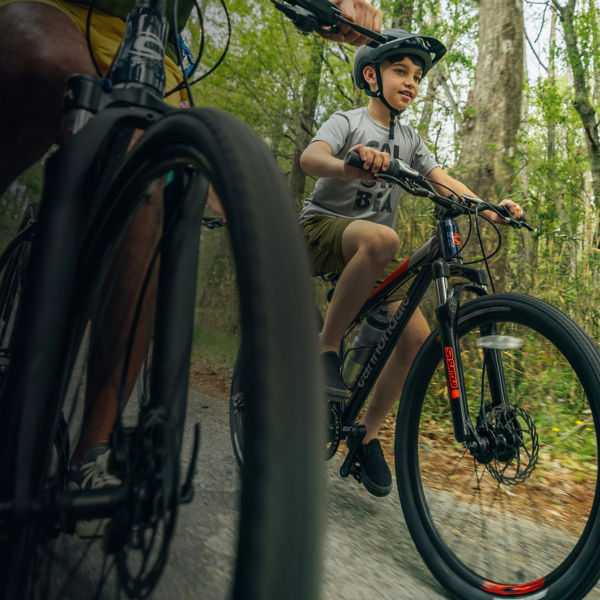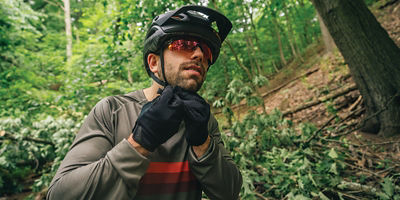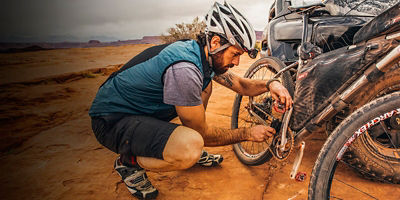
While bike touring usually involves smooth roads, bikepacking trips include dirt roads and even singletrack trails. In other words, bikepacking opens up a broader, wilder world to you and your bicycle. To do it, you’ll need to be prepared to store and carry a lot of gear on your bike—here’s how to get started.
Questions to Ask Yourself
Start by gauging your interest level and taking inventory of your storage gear.
Will I like bikepacking?
Before you go out bikepacking (and invest in bikepacking gear), take shorter trips to determine if you enjoy exploring and camping by bike.
What bags do I have?
Take inventory of the bags you have available to carry gear. Don’t be afraid to borrow from other outdoor sports like skiing or hiking—some items from those disciplines can be useful on the bike, too.
How far do I want to go?
Once you have a trip in mind, assess how much stuff you need. Just because you can fit more doesn't mean you should. Pack for the trip you’re taking, and only expand your bikepacking setup when the things you absolutely need no longer fit in your existing bags.
How much am I willing to spend?
Bikepacking gear can be expensive. Upgrade slowly and thoughtfully to make your dollar go as far as possible.
Start With What You Have
For day-rides, overnighters, and even some weekend trips, you can usually get away with using what you already have.
Backpack
Bikepackers on longer journeys often avoid backpacks, as they can cause chafing, but they’re a great option for shorter trips. A backpack is a great place for lightweight, bulky items like a tent, sleeping bag, or extra clothing. Here are a few packs to consider.
Bookbag: A light, structureless bookbag can work for bikepacking in a pinch. Look for something smaller than 15 liters.
Fanny Pack: Also referred to as a hip pack or a lumbar pack, fanny packs sit low on your back and stay in place while you ride. The bag’s straps can also be wrapped around your handlebars to become a handlebar bag.
Bike-Specific Daypack: Biking backpacks are engineered to work with your body on a bike, and if you own one, definitely use it. They are less likely to slide up toward your shoulders and often have cycling-specific features like contoured hip belts, sternum straps, and lower back padding to help the bag stay in place and make it more comfortable.
Hydration Packs: A common gear item across outdoor sports, these packs carry water (and sometimes a small amount of gear, too). They vary according to the hydration bladder capacity, and the capacity of the pack that surrounds it.
Panniers
Commuters or bike tourers often use panniers. While these work great on pavement, they’re less stable in off-road conditions and they’re vulnerable to scrapes and scratches when riding narrow singletrack. If you already have panniers, use them, but know you’ll be limited to smoother, wider dirt trails. In addition, panniers often require separate racks in order to mount to your bike. Bikepacking bags, on the other hand, often attach with velcro loops, which allows you to get more creative in where you mount them.





















